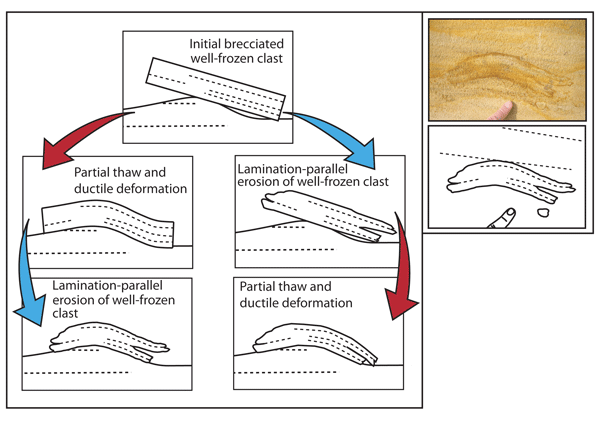
Figure 4.
Constraints on evolution of intraclast rheological behavior shown by curviform intraclast with wedge-shaped gap (red arrows—partial thawing; blue arrows—refreezing). The sequence shown at left is the only way to achieve the ultimate configuration of deformed clast with observed wedge-shaped gap. Bending must occur prior to gap formation, because gap orientation requires a competent, but already curviform, clast. This evolution is suggestive of freeze-thaw-freeze (freeze to create original tabular clast that survives transport, partial thaw to then bend clast, and subsequent refreeze to create a competent clast that can support gap formation in this new position).